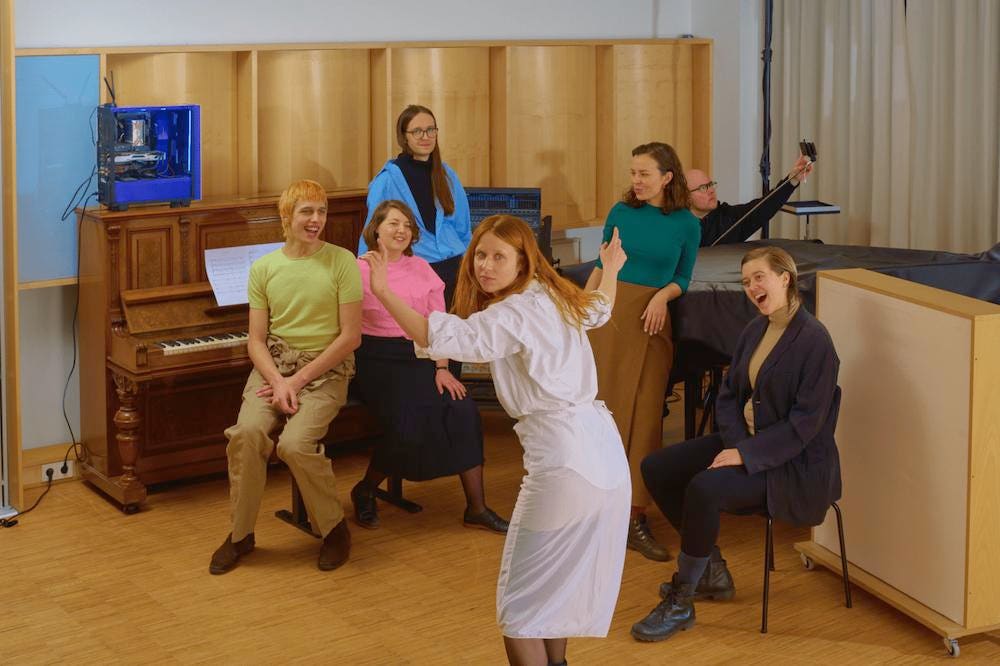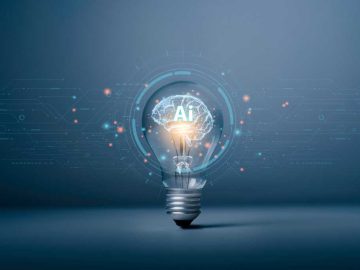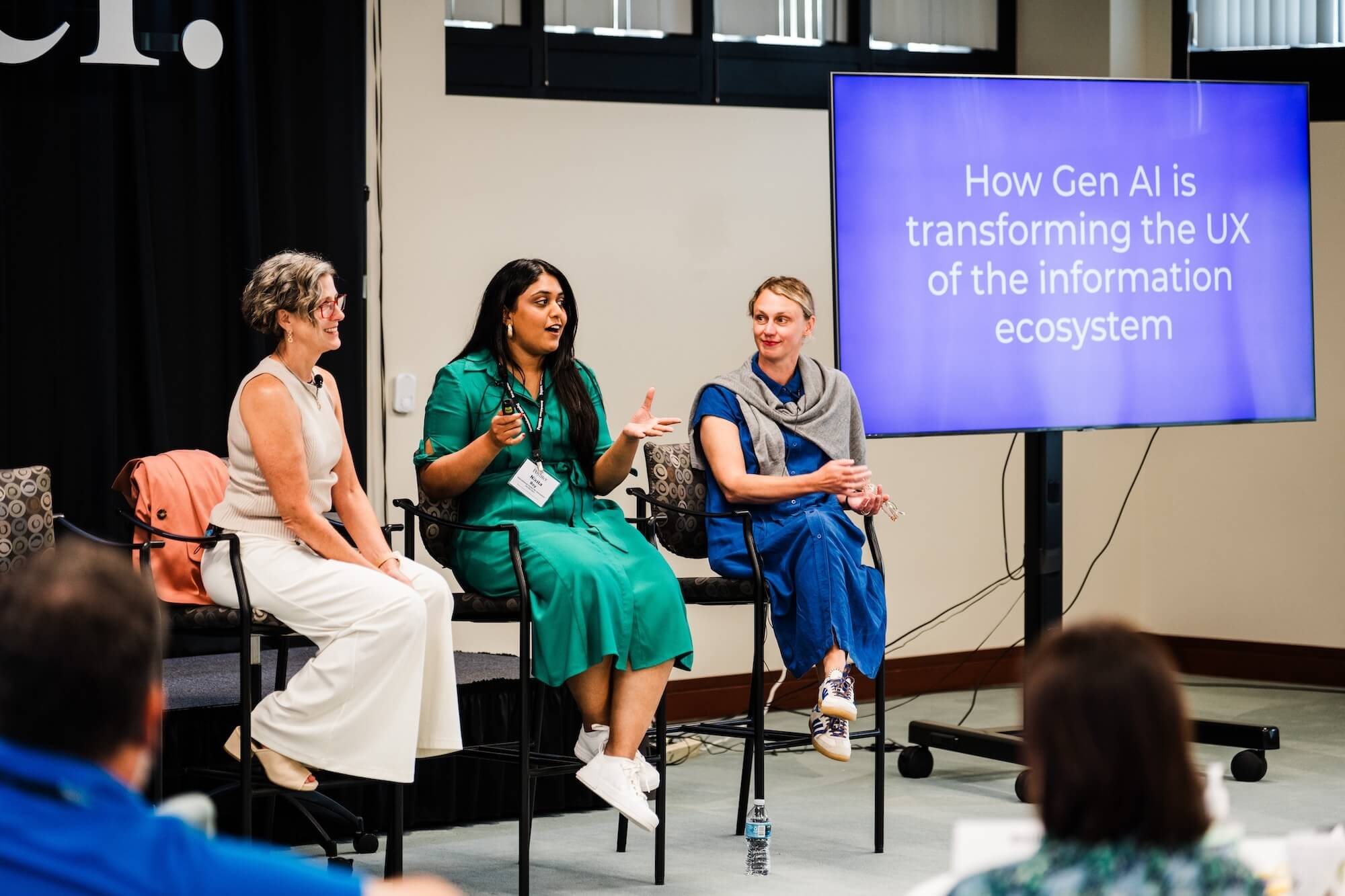Left to right: Roman Ole, Evelyn Saylor, Jules LaPlace, Holly Herndon, Josa Peit, Mathew Dryhurst … [+]
Boris Camaca, 2019. Curtesy of Holly Herndon
Artists have long engaged with new technology. Notably, in the 1960s, engineer Billy Klüver collaborated with artists Robert Rauschenberg, Robert Whitman and Fred Waldhauer to co-found Experiments in Art and Technology (E.A.T.), a non-profit that played a pivotal role in merging technology with art. Contemporary artists are similarly immersed in cutting-edge tech, but they now face even more pressing issues as generative AI embarks on its own expansive and unpredictable journey.
Serpentine is acutely aware of the challenges facing not only artists, but also the public. For over a decade, the London cultural institution has been deep diving into the ocean that is AI. Through Serpentine Arts Technologies research body and Creative AI Lab, a collaborative project with King’s College London, it has been investigating the impact—positive and negative—of new technology on the arts and artists.
In recent years, the Serpentine galleries have staged numerous exhibitions highlighting the work of some of the most interesting and diverse digital artists of our time, including Brazilian artist Gabriel Massan and Los Angeles artist/designer Refik Anadol. This fall the gallery welcomes Berliner artists and technologists Mat Dryhurst and Holly Herndon (named by TIME magazine among the 100 most influential people in Al) who are imagining the art institution as a laboratory for finding new technologies through an artist-led Al system.
The exhibition coincides with the publication of “Future Art Ecosystems 4: Art x Public Al,” Serpentine’s latest strategic briefing which sets out to break down the implications of Al for the cultural sector and offer strategies for claiming greater agency within Al-driven economies.
I took the opportunity to speak with Hans Ulrich Obrist, curator, critic and art historian, and artistic director at the Serpentine. I wanted to understand why the cultural institution is so involved with the art of AI, and how he views the potential and perils of the technology.
Refik Anadol Echoes of the “Earth: Living Archive” 2024. Installation view, Serpentine North
HUGO GLENDINNING. COURTESY REFIK ANADOL STUDIO AND SERPENTINE
Why is it critical for a cultural institution like yours to be involved directly with artists who work with cutting-edge technology like AI, and to help realize their projects?
It is important for art institutions to engage with technology, which is why we’ve been developing our technology department in the last 12 years. In the 1960s Billy Klüver and E.A.T worked with the leading tech company of that time Bell Lab, who made it possible to create projects that would have otherwise not have happened. We have a similar situation today with artists who want to work with technology. To give you an example, the young, brilliant Brazilian artist Gabriel Massan, wanted to do a video game (for “Third World: The Bottom Dimension,” exhibited at Serpentine North in 2023). Working with our technology team of five curators, we were able to produce that.
Your Creative AI Lab initiative forms spaces for research into AI systems, with the data and findings available to other cultural institutions and artists. Why does Serpentine invest in an open-source research project?
One part of what we do is to activate and enable artists who want to work with new technologies. The second point, which is very important to us, is to think beyond the confines or the walls of Serpentine—to consider the whole sector. The Creative AI Lab offers a research platform and it is a space to investigate AI systems from a cultural perspective. It generates a solid foundation for leadership for the entire arts. Our alliances are crucial. Knowledge production is very important to us.
Gabriel Massan “Third World: The Bottom Dimension” at Serpentine North
Serpentine. Photo: Hugo Glendinning
Is this why you invest in these in-depth reports, and make them readily available for all to view?
As a cultural institution, we want to be useful for the artist as well as the whole art sector. So far we’ve published four reports, available for anyone to download. The latest, “Future Art Ecosystem: Art x Public AI”, looks at AI and is a strategic briefing which breaks down the topic and makes it accessible for the cultural sector. It offers strategies for greater agencies for the art sector within the AI economy.
What is the potential of working with a self-created dataset—open-source AI models like the one artist Refik Anadol has been developing alongside Smithsonian and National History Museum, and through his own data gathering in the Amazon rainforest?
We think artists can not only show us how to positively use these technologies, but also show us the dark corridors of technology, the dangers, which is equally important. Refik Anadol shows us that art can intermediate between culture, technology, society, ecology etc. Artists can make the invisible visible. Another important aspect is, of course, the question of how we source the data, how we can ethically source archives, and who owns these datasets. We think that this is a negotiation.
Anadol’s work is very much about connecting us to nature through technology—through his immersive AI art he reveals the possibilities of our interconnectedness with the rest of the environment, what we can see and what we can’t. We saw this vividly and viscerally in “Echoes of the Earth: Living Archives” staged at Serpentine North this winter. Can you speak of how the ecological message sits within your vision at the gallery?
We can use technology for fostering attention to the natural world. We need to look at how tech can create a spiritual connection with nature to make sure we are communicating with the environment rather than continue this colonial separation from nature, which is destroying the environment. It is about expanding the possibilities of how art can act as an intermediate between culture, technology and society, and how art can liberate us from becoming stuck in a quantified world, which is very dangerous.
Alexandra Daisy Ginsberg “Pollinator Pathmaker” planting for Serpentine “North Flower Walk,” … [+]
Moral Flex ©readsreads.info.
As a curator, is it exciting, perhaps sometimes even daunting, to work with AI artists who are working in very different fields, with different expressions, some of which are new to us all?
That’s a very interesting question because we learn from each artist we are working with enormously. And these artists enter the DNA of the organization since an institution is a learning system. Their work is very collaborative, and they bring with them all their own partners, an entire ecosystem. Gabriel Massan, for instance, brought a whole interdisciplinary crew of people to create their video game. We are always listening, we are learning, we are transforming, we are changing. What’s also interesting is their lifespan. Whereas an exhibition would typically stay for a few months, these digital artworks are like a living organism. They never end.
Visiting these digital exhibitions, what strikes me is the diversity of audience and visitor engagement. Do these exhibits and interventions impact on Serpentine as a gallery and a learning space?
Absolutely. We want to be constantly evolving. With the artist Alexandra Daisy Ginsberg we created (“Pollinator Pathmaker,” April 2022 to March 2024), a living sculpture on Kensington Gardens for pollinators rather than humans, which became one of the longest lasting outdoor public projects in London. She was able to create this work in collaboration with AI with which she gathered data on plants which love to pollinate for an exhibition that encourages a multi-species dialogue. These are longer duration projects which are interesting for a gallery.
Exhibitions such as Gabriel Massan’s led to new audiences. Many were young teenagers who brought along their parents. In my experience of 30 years of museum practice, it’s always the other way around! These exhibitions can help connect a younger audience to the museum.
What do you see as the role of museums and cultural institutions in engaging the public in understanding the impact of AI on our lives, acting as a bridge to almost demystify it for the public?
Our role is to build bridges between cultures, technology, science and society. In this fragmented world we need more bridgebuilding, and we hope through our work we can contribute to this. Technology often creates separation. Social media creates filters. With art we can hopefully break that filter bubble, and be an intermediator between culture, art, science, technology. It’s about togetherness.
Read my interview with Refik Anadol, see digital artist Cao Fei’s “Duotopia” at Sprüth Magers in Berlin, and read why French gaming artist Sara Sadik is exploring loneliness through gaming.





